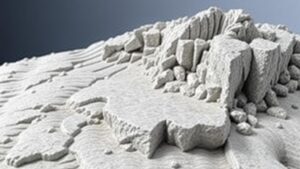Techniques for Recovering Silver from Mixed Sulfide Concentrates
Introduction
The recovery of silver from mixed sulfide concentrates presents numerous challenges, primarily due to the complexity of the ore composition and the presence of other metal sulfides. Silver is a highly sought-after metal due to its applications in electronics, jewelry, and various industrial processes. Hence, effective recovery techniques are vital for economic viability. This article explores several prominent techniques used in the extraction of silver from mixed sulfide concentrates, highlighting their methodologies, advantages, and limitations.
Understanding Mixed Sulfide Concentrates
Mixed sulfide concentrates typically contain a combination of valuable metals, including lead, zinc, and copper, alongside silver. The presence of these other metals can complicate recovery procedures. Effective recovery requires a solid understanding of the properties and behaviors of both the silver and surrounding minerals.
Types of Mixed Sulfide Concentrates
Mixed sulfide concentrates can be classified according to their dominant metal content, which affects the choice of recovery technique. Key types include:
- Lead-dominated concentrates
- Copper-dominated concentrates
- Zinc-dominated concentrates
Recovery Techniques
Several techniques are employed in the recovery of silver from mixed sulfide concentrates, each with unique processes and efficiencies.
1. Flotation
Flotation is one of the most common techniques used for the separation of silver from other sulfides. In flotation, powdered ore is mixed with water and chemicals that selectively bind to the target metal particles, allowing them to attach to air bubbles and float to the surface. resulting froth can then be collected as a concentrate.
For example, the use of xanthates, which are collectors in the flotation process, has shown high recovery rates for silver from lead and copper sulfides. Case studies indicate that flotation can achieve recoveries of up to 90% in specific conditions.
2. Hydrometallurgical Methods
Hydrometallurgy involves the chemical extraction of metals using aqueous solutions. For silver recovery, leaching agents such as cyanide (cyanidation) or thiourea are commonly applied. These substances dissolve silver from concentrates and separate it from other impurities.
One notable example is the cyanide leaching process, which can recover up to 98% of silver when optimized properly. But, the toxicity of cyanide poses environmental risks, necessitating strict regulations and innovative methods to minimize its use.
3. Pyrometallurgical Techniques
Pyrometallurgy involves high-temperature processing to extract metals. This technique is often used in conjunction with smelting to recover silver from sulfide concentrates. The concentrates are mixed with fluxes and heated in a furnace, where the desired metals are melted, and impurities are removed as slag.
For example, the use of a cupola furnace can yield a silver recovery rate of approximately 80%. But, the high energy requirements and emissions associated with pyrometallurgy can be significant drawbacks.
Challenges in Silver Recovery
Silver recovery from mixed sulfide concentrates is not without its challenges. Some of the prevalent issues include:
- Complexity in ore composition leading to variable recoveries
- Environmental concerns associated with certain chemicals
- High operational costs for advanced recovery technologies
Environmental Considerations
As silver recovery techniques evolve, addressing environmental impacts becomes increasingly important. Innovative approaches such as green chemistry and bioleaching (using microorganisms) show promise for reducing the ecological footprint. Ongoing research is crucial for developing more sustainable recovery methods.
Conclusion
The recovery of silver from mixed sulfide concentrates encompasses a variety of methods, each with its own set of strengths and challenges. Understanding the specific characteristics of the ore and applying the most appropriate recovery technique significantly enhances economic viability. By leveraging advanced extraction methods and addressing environmental impacts, the silver recovery industry can evolve sustainably in the coming years.
Actionable Takeaways
- Conduct thorough ore analysis before selecting a recovery method.
- Stay updated on innovations in environmentally-friendly extraction technologies.
- Consider the combined use of multiple recovery techniques for optimal yield.


